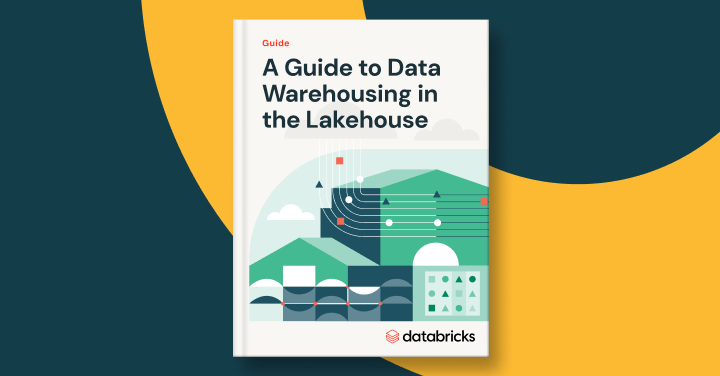Data Warehousing Concepts: Exploring Common Processes

Data warehousing — the systems, structures and processes that enterprises use for data management and storage — is critical for modern organizations. Data is more important than ever, especially in the age of machine learning and AI. Effective data warehousing enables companies to harness the value of their data, which is crucial to staying competitive and building a successful future. This page explores key data warehousing concepts in terms of the most common processes that are used for data warehousing.
Here’s more to explore
What is the purpose of a data warehouse?
A data warehouse (DWH) is a data management system. It stores and organizes current and historical data from multiple sources in a business-friendly manner. Data warehouses can handle large volumes of data and are designed to enable businesses to analyze trends over time. The main purpose of a data warehouse is to facilitate data storage, consolidate data from many sources, and provide a foundation for data insights and reporting.
What business needs do data warehouses support?
Data warehouses are typically used for business intelligence (BI), analytics, reporting, data applications, preparing data for machine learning (ML), and data analysis.
Data warehouses:
- Make it possible to quickly and easily analyze business data gathered from operational systems such as point-of-sale systems, inventory management systems, or marketing and sales databases
- Integrate data from many sources to show historical trends
- Enhance decision-making by supporting advanced analytics and reporting capabilities and by providing real-time access to unified datasets
- Provide a single source of truth to build trust in analytics insights
- Separate analytics processing from transactional databases, improving the performance of both systems
- Ensure data quality and accuracy via data cleaning and consolidation
- Foster consistency by using a standard set of semantics around data, including consistency in naming conventions, codes for various product types, languages, currencies and more
- Facilitate regulatory compliance by providing secure and auditable storage and management for sensitive data
Core data warehouse concepts
Data warehousing consists of several steps, tools and processes to make enterprise data ready and available for business insights and decision-making. Common processes include:
Data storage
Data storage is an essential element of data warehousing. Data needs to be held in a way that enables analysis and reporting. Along with data warehouses, data storage solutions can include:
Databases: A database is a collection of structured data, extending beyond text and numbers to images, videos and more. In contrast, a data warehouse is a structured repository that provides data for business intelligence and analytics.
Data lakes: A data lake is a central location that holds a large amount of data in its native, raw format. Unlike most databases and data warehouses, data lakes can process all data types — including unstructured and semi-structured data like images, video, audio and documents — which are critical for ML and advanced analytics use cases.
Data lakehouses: A data lakehouse is an open data management architecture that combines the best elements of data lakes and data warehouses, enabling BI and ML on all data. Lakehouses use data structures and data management features similar to those of a data warehouse, but instead run them directly on cloud data lakes. Ultimately, a lakehouse allows traditional analytics, data science and ML to coexist in the same system, all in an open format.
Federation is an important concept for data storage. This data management strategy enhances data accessibility and quality by querying data from different sources into a single virtual format. Such a model eliminates the need for huge data storage systems and enhances data analytics and integration.
Data integration and ingestion
Data integration and ingestion is the process of gathering data from multiple sources and depositing it into a data warehouse. Within the integration and ingestion process, data is stored in a uniform format, ensuring consistency and quality and making it easier to use. Enterprises can use federation, the data integration technique mentioned above, to provide a unified view of data from multiple sources without physically consolidating it.
Traditionally, this has been facilitated via ETL, which stands for extract, transform and load. In this process, data engineers extract data from different sources, transform the data into a usable and trusted resource, and load that data into the systems that end users can access and use downstream to solve business problems.
However, ELT, or extract, load and transform, is a newer processing option that takes advantage of modern data storage capabilities. In ELT, data is loaded as soon as it is extracted, without being transformed first. It is then transformed into a usable format, as needed, directly from the data repository. ELT works well with modern data lake architectures, such as medallion architecture, that allow for the storage of both structured and unstructured data. Using ELT, analysts can take advantage of a wider variety of data types, potentially leading to more valuable insights.
Data transformation
Data transformation is the process of changing data into a format that can be loaded into a data warehouse. Typically, data is gathered from several different sources that use various formats. Data transformation cleans and standardizes data to facilitate business use.
Transformation steps can include:
- Data cleaning and filtering: Identifying inconsistencies, errors, missing values and duplicate data
- Data validation: Verifying data types, formats, accuracy, consistency and uniqueness to ensure data correctness and prevent flawed results
- Format conversion: Changing the format of data to create data compatibility and facilitate smooth data processing
Data serving
Data serving is the process of delivering data to users to support analytics, reporting and decision-making. Data serving processes include querying, provisioning and retrieval of data from storage systems. The goal is to ensure fast and efficient delivery to users, applications and systems by optimizing data storage and indexing strategies. Data also needs to be delivered securely, so access controls, authentication and permissions are critical.
Data querying
Querying is the process of requesting access to specific data in a database in order to extract or manipulate it, using a structured query language such as SQL. Querying is key to data warehousing as the method by which users access, extract and analyze meaningful insights from the large amounts of data stored within a warehouse. Businesses use querying to generate reports, dashboards and visualizations to identify opportunities, monitor performance and make data-driven decisions. Data warehouses are designed to efficiently execute complex queries on large datasets.
Data visualization
Data visualization is the process of displaying data from a warehouse in visual forms, such as graphs, charts, diagrams, maps, infographics, data stories, reports and dashboards. The human brain can process images more quickly than it can a series of numbers, so visualization helps users understand data more easily than when it is presented in spreadsheets, for example. This enables business users to compare datasets and identify patterns, trends, anomalies and outliers in the data. Data visualization tools allow users to create visualizations, find insights and share their conclusions.
Data warehouse performance optimization
Data warehouse optimization is the process of improving query performance, processing and data retrieval within a data warehouse. It uses specific techniques to support complex queries, maintain high performance and generate timely insights. Data optimization is particularly important for managing large datasets.
Data warehouse optimization techniques include:
- Hardware and storage optimization, including high-performance storage, efficient data compression and scalable infrastructure
- Indexing strategies to speed up data retrieval
- Materialized views for faster query execution
- Partitioning to divide data into smaller segments to improve data access and query performance
- Writing efficient SQL queries to enhance performance
The intelligent data warehouse, an evolution of the traditional data warehouse, takes optimization much further. The modern data warehouse leverages the open data lakehouse architecture instead of the traditional architecture and has an intelligent and automatically optimizing platform. AI-powered optimization eliminates the burden of manual management and ensures optimal data warehouse processes.
AI and ML integrations
Traditional data warehouses are designed for common data warehouse workloads, including historical reporting, BI and querying. However, they were never designed for or intended to support AI or ML workloads. But recent advances make it possible to integrate AI and ML into data warehouses. An intelligent data warehouse not only provides access to AI and ML models but also uses AI to assist with queries, dashboard creation, and performance and sizing optimization.
Data governance
Data governance consists of the principles, practices and tools used to manage an organization’s data assets to align with its business strategy. Data governance is critical for data warehousing because it ensures data visibility, quality, security and compliance capabilities across the organization. Implementing an effective data governance strategy allows companies to make data easily available for data-driven decision-making while safeguarding data from unauthorized access and ensuring compliance with regulatory requirements.
Data security
Data is a valuable asset for organizations, and it can also be very personal and sensitive. Companies need to have safeguards to protect their data, as well as the data of their customers, from getting into the wrong hands. Data warehouse security measures include:
- Access controls and permissions, including role-based access control and multifactor authentication, to ensure that only authorized people can get to data in the warehouse
- Encryption, which offers a layer of protection in case of a data breach and is often required as part of regulatory compliance
- Data loss prevention, which acts as a security guard to monitor data and prevent mistakes
- Regular security audits to test security systems
Metadata management
Metadata is data about data, which is crucial for data governance and management. It provides context and details about the data, such as origins, transformations, structure, relationships, usage and other important elements that are key to ensuring data consistency, quality and reliability.
Metadata management is a collection of tools and processes that help organizations capture, catalog and govern metadata. An effective metadata management system works to foster data quality and help users easily find, extract and understand the data they need to generate insights. It’s also key to security, as it offers information about data lineage — the record of a data’s journey through its lifecycle — and who has accessed the data.
How data warehousing concepts support business intelligence
The central purpose of a data warehouse is to store data in a way that empowers organizations to harness its value. Business intelligence — the process of asking big questions about the business and finding those answers in the company’s data — is one of the most important ways in which organizations reap value from their data. Each core concept of data warehousing supports the ability of the company to carry out business intelligence. These data warehousing concepts work together to ensure that data is stored safely and that business users can easily access and analyze it. In the big picture, these processes and systems facilitate the insights and data-driven decisions that fuel enterprise innovation, progress and success.
Modern data warehousing on Databricks
Databricks offers an intelligent data warehouse, Databricks SQL. Built with the Data Intelligence Engine, which understands the uniqueness of your data, Databricks SQL democratizes analytics for technical and business users alike. The business can innovate fast with an intelligent and auto-optimizing platform that provides the best price/performance in the market. Additionally, as part of the Databricks Data Intelligence Platform, Databricks SQL benefits from the simplicity, unified governance, and openness of the lakehouse architecture.


